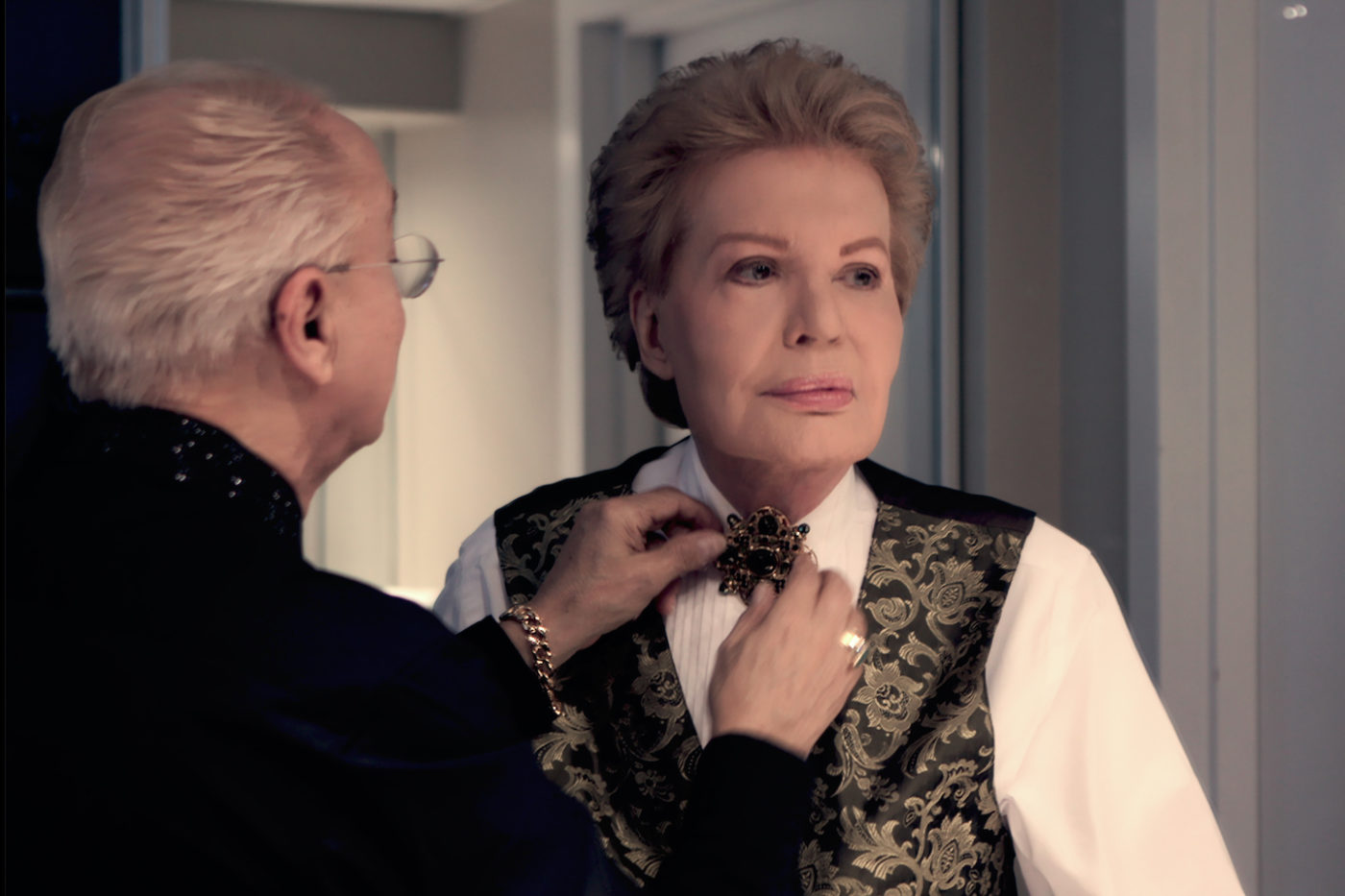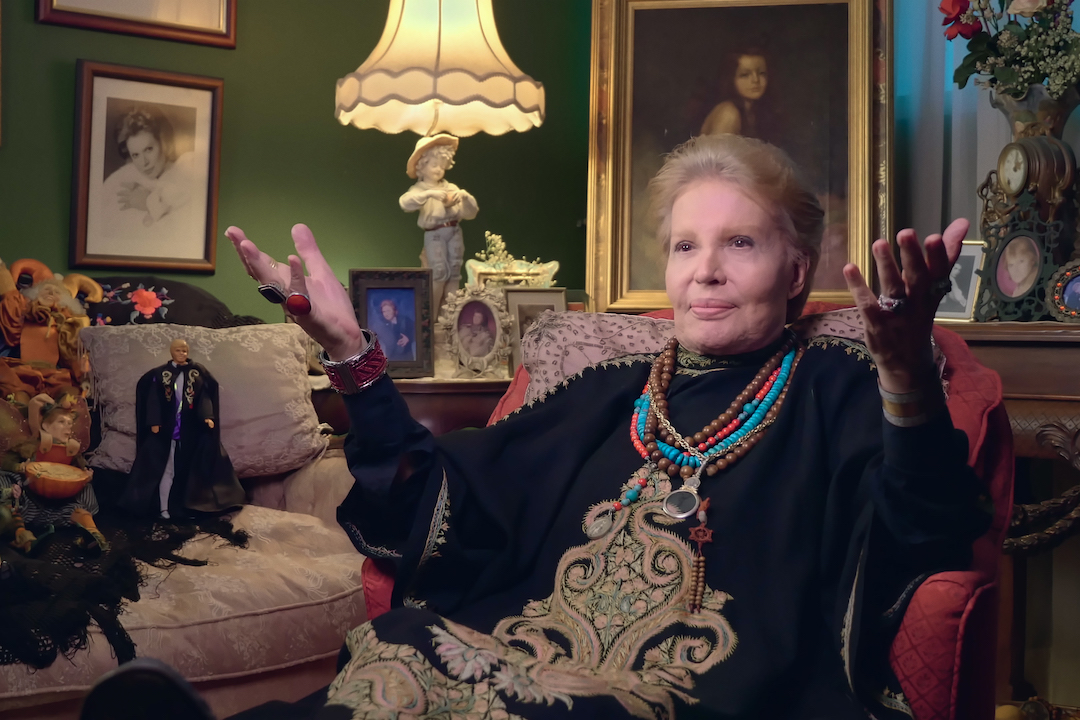By Alejandro A. Riera
Walter Mercado related memory Number One: A year after my paternal grandfather died, my mother sent my brother and me to spend a couple of days with my grandmother, who lived in an apartment complex a couple of blocks from la saguesera in Miami. Whenever she introduced us as her grandchildren from Puerto Rico to any of her female neighbors, they would inevitably, and breathlessly, ask “Do you know Walter Mercado? What do you think of him? Isn’t he marvelous?” Keep in mind that this was the mid-70s, long before he became an international superstar and that we were just nine and ten-years old. How did these women know Walter? As far as we were concerned, his show only aired in the island. And why did they think we knew Walter personally?
Walter Mercado related memory Number Two: Right after the Chicago Tribune centralized all of HOY’s operation in Chicago in the aftermath of the Newsday/HOY New York circulation scandal, I was tasked, as the recently appointed National Features Editor, to reach out to Walter’s people and secure the rights to publish his horoscope in our daily and weekend editions for all three markets where HOY was published (Chicago, New York and Los Angeles). The decision, negotiation and eventual publication of not only his horoscopes but also his annual predictions were met with derision and mockery by most in the newsroom. Why stain our credibility with such nonsense, I was frequently asked. The answer to me was obvious: he attracts readers.
Both memories highlight what, for me, made Walter such a ubiquitous, beloved and, at times, controversial figure. His TV appearances were extravagant, theatrical; he out-Liberaced Liberace in showmanship. But he also projected this down-to-earth, almost neighborly vibe; he spoke to millions of viewers and readers as if he were sitting in their living or dining rooms, gossiping while reading their tarot cards over a cup of coffee. And in embracing an androgynous persona he not only challenged a culture’s rampaging machismo and homophobia but he also made gender fluidity accessible and acceptable to millions. His was a quiet revolution.
Cristina Costantini’s and Kareem Tabsch’s loving documentary Mucho Mucho Amor: The Legend of Walter Mercado taps into and expands on these qualities. For a documentary so enthralled with its subject (and who wouldn’t be?), Mucho Mucho Amor is level-headed and balanced. It benefits from the access Walter and his family gave both filmmakers and producer Alex Fumero. They explore Walter’s strengths and weaknesses; it interviews those who took advantage of Walter without demonizing them; and it provides context. For someone who grew up in 1970s Puerto Rico, Mucho Mucho Amor also offers a delightful, nostalgic and too brief glimpse at the history of the island’s television industry. And Walter’s last visit to downtown Ponce, Puerto Rico before it was nearly destroyed by a 5.8 and a 6.4 earthquake last February may tear your heart if you have ever visited that glorious city full of architectural treasures. The documentary also gives its fans an opportunity to say goodbye; Walter died on November 2, just as the documentary was being completed. I suspect, had he still been around, that the damage caused by the earthquake to his hometown would have broken his heart.
Costantini and Tabsch build their documentary around a simple question posed by Univision personality Raúl de Molina: after entering millions of households throughout the world, why did Walter disappear from the small screen? Structured around Alexa Lim Haas’s playful animations of a set of Tarot cards the film immediately delivers the goods as the filmmakers take us right into Walter’s house in the outskirts of San Juan. Haven’t seen Walter in years? Well, here he is, making his grand entrance. And while his house certainly has a museum-like quality to it with its memorabilia, its paintings of Walter, huge book collection and stacks of videotapes, its inhabitant, at least within its confines, comes across as this endearing queer abuelito or tío. What you see is what you get: a being that exudes humility, happy with life, without a mean bone in his body. Walter is still being pampered by his longtime assistant and companion Willie Acosta who describes himself as Walter’s left- and right-hand man. He is as protective of Walter’s legacy and wellbeing as his nieces, also interviewed in the film.
In talking about his childhood, Walter has no qualms in calling himself a jíbaro, the name given to Puerto Ricans born and raised in the countryside. Yet this jíbaro was different; he was a sensitive child, not made for the hard work of the island’s sugar cane fields. And then there is that story Walter tells about the dead bird that he resurrected with some words and by breathing air into his beak turning him, in the eyes of the townspeople, into some sort of mystical figure with healing powers. Costantini and Tabsch make great use of archive material to trace Walter’s path as an actor and dancer. When, during an impromptu TV appearance, Walter started to talk about the stars and the signs in full theatrical regalia, the phones in the station began to ring off the hook. And so, Walter was given his own show: Walter y las estrellas.
The documentary leaves no stone unturned: his penchant for extravagant capes, his rise as a media personality, his virginity and his association with the one person who eventually became his Svengali, Guillermo “Bill” Bakula. Bakula was instrumental in turning Walter into an international phenomenon: a daily segment in Univision’s Primer Impacto, appearances in countless talk shows around the world and his association with an infamous psychic call line, the Psychic Friends Network. Walter foolishly signs a contract that gave Bakula the rights to his image and name for all eternity, which ended in a protracted legal fight which led to the cancellation of his segment in Primer Impacto as well as other TV appearances. The documentary rightfully celebrates Walter as an LGBTQ icon who, through his actions and persona, defied a homophobic culture, one that ridiculed him through crass imitators in equally crass comedy shows in Spanish. Costantini and Tabsch show us how, as a guest to some in these shows, Walter pushed back and defied them.
But as I was listening to him talk about religion and spirituality, I realized that Walter had a deep understanding of the connections between the world’s religions, that someone with intellectual heft was hiding behind all that glamour and theatricality. This is where I go “I wish…” because, as the camera roams around Walter’s house, I was drawn not by his capes and painting, but by the hundreds of books he owned and that Oscar Wilde photo standing next to one of Walter’s on a table. And I wish Costantini and Tabsch had devoted a little more time on what drove Walter intellectually. Because, as you hear him speak about faith and religion and how they tie together with what he does, you realize that there’s more to Walter than meets the eye. (I also wished they had made mention of the fact that Walter changed his name to “Shanti Ananda” in the middle of his legal battles. Come on, that’s the most Walter-ish thing, Walter ever did!)
The documentary ends with an exhibit dedicated to his career at the HistoryMiami Museum, a triumphant return for someone who loved to perform in front of an audience and who honestly believed in what he preached, no matter how farfetched it sounded to some. But even that celebration feels bittersweet now. Walter may have left the physical realm and entered a spiritual one. But his impact on Latin American and Puerto Rican television, and the industry overall, is undeniable. He was one of those rare pop icons who transcended cultures, languages and generations. Mucho Mucho Amor is not only a worthy biography but I also hope it paves the way for other documentarians and historians to explore the contributions Latinos have made to the history of television throughout the continent, from Alaska to Tierra del Fuego.
Mucho Mucho Amor: The Legend of Walter Mercado is currently streaming on Netflix.

